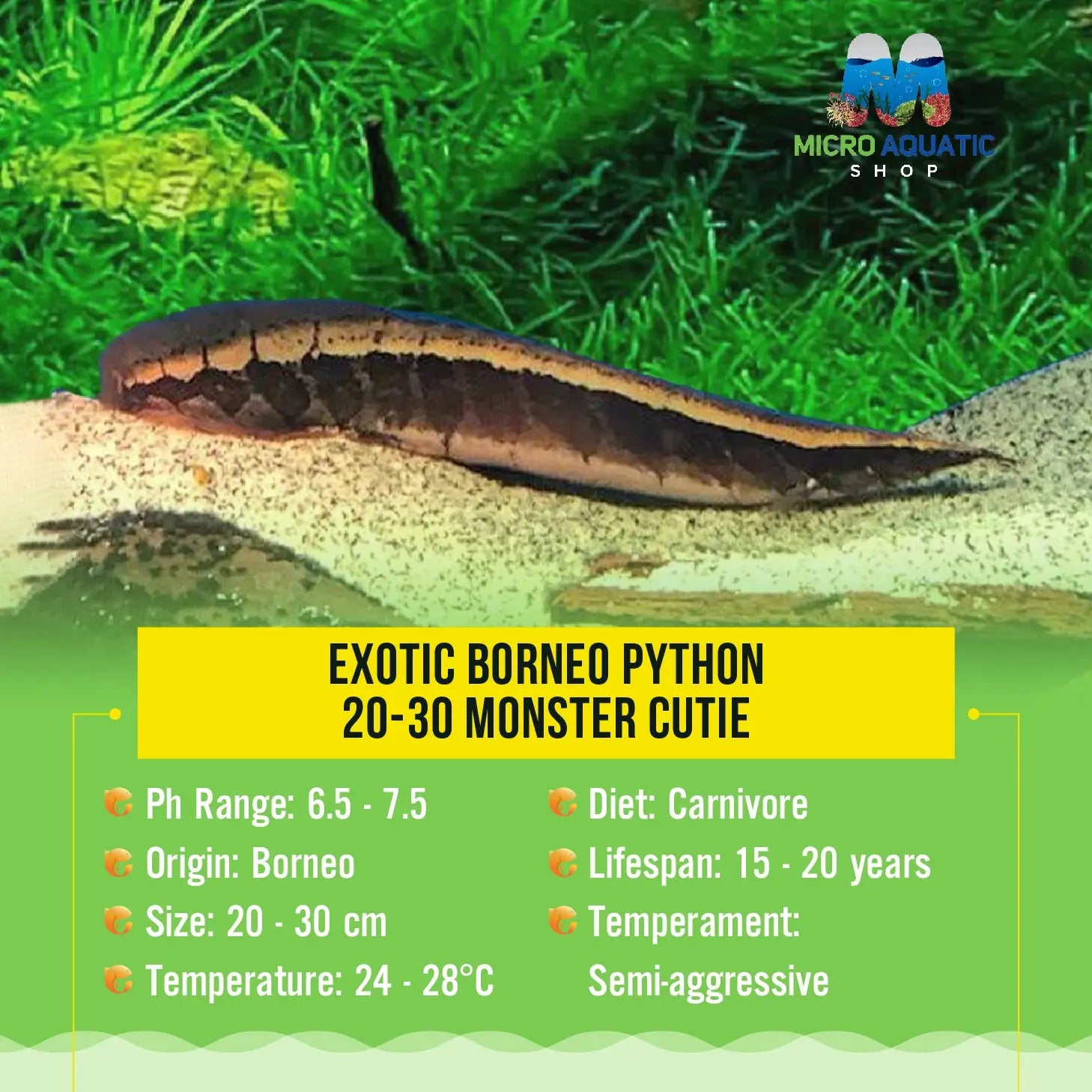Exotic Borneo Python 20-30 Monster Cutie
Guarantee Safe Checkout
✅ Borneo Python Eel 20-30
✅
An uncommon and beautifully marked freshwater eel from the acidic freshwater swamps of Borneo, the Python Eel is a well-camouflaged ambush predator in its natural habitat. In the aquarium, they are hardy but can be shy at first – be sure to provide plenty of cover. Although recently imported fish can be finicky eaters, they will usually learn to accept a variety of frozen foods. Like most freshwater eels, these fish should be kept in tightly covered aquariums as they will utilize even small openings to escape.
✅
Origin: Wild Kalimantan Borneo, Indonesia
Diet: Predator, feeds on insects, fish, and crustaceans in the wild. Will accept frozen foods but can be finicky at first.
The eel feeds on invertebrates (such as insect larvae, worms, and crustaceans), smaller fish, plant matter, and detritus .In captivity, they only rarely eat plant matter.
✅Tank Size
The minimum recommended tank size for these fish is around 300 liter tank. The size of these fish and their activity level means they need ample room so they can swim and feel comfortable.
Water Parameters
Fire Eel are pretty hardy and can survive in a fairly wide range of water parameters. With that being said, there is a recommended window that you should aim for if you want them to be as healthy as possible.
- Water temperature: 24- 28°C
- pH levels: 6.2 to 7.8
- Water hardness: Soft
- KH: 5-20 dKH
- Substrate : Soft Sand
- MUST TO HAVE LID
- Adult size 18 inches
ENVIRONMENT :
Dark water , driftwood , plants and low light .
Limited Quantity Available - Will Sell out Fast!
Note:
We can’t ship Livestock and Live Plants to WA and TAS due to State Restrictions. Kindly check out our DOA and other policies before purchase!!
What to Expect from Us
All Aquatic plants and animals come with a 100% live arrival guarantee!!

| Size |
1 Borneo Python Eel 20-30 cm, 2 Borneo Python Eel 20-30 cm |
|---|






